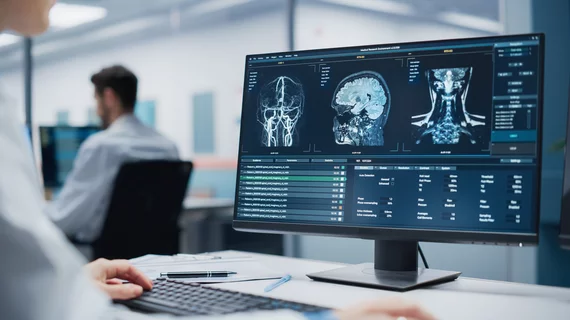Why PACS should be part of undergrads' medical education
Picture archiving and communication systems (PACS) could be a valuable tool for teaching undergraduate medical students about different aspects of radiology.
Learning the ins and outs of the field is integral to an undergrad’s medical education. However, many of these lessons leave out hands-on opportunities for students—something that could greatly benefit their understanding of the specialty, authors of a new BMC Medical Education paper propose.
“Currently, most radiology education still relies heavily on textbooks and traditional computer media such as PowerPoint or Word files both of which lack student interaction," radiologist and corresponding author Farnood Rajabzadeh, MD, of Mashhad Medical Sciences at Islamic Azad University in Iran, and colleagues explain. "PACS offers advantages such as interactive image viewing, 3D reconstruction capabilities, and the ability to simulate real-life radiology practice, which traditional methods lack.”
The group sought to determine whether integrating PACS into undergrads’ education might improve their knowledge related to radiology over traditional teaching methods. To do this, they divided a group of 53 students into two groups—one that received slide-based training and another that was schooled using PACS software to view patient images. Each group completed satisfaction surveys before and after their courses were completed.
The overall scores of the post-course tests were similar between the groups. However, the PACS groups showed significantly greater improvement on the short answer test for image interpretation. The group also reported higher familiarity with PACS capabilities (75%), CT principles (71.4%), interpretation (64.3%), appropriate window selection (75%) and anatomical relationships (85.7%).
“The results of the study indicated that this educational approach allows for better clinical guidance, which is necessary to help students form a holistic view of anatomy and pathology,” the group writes. “Most importantly, this educational method helps students to develop critical thinking and a systematic approach to formulating imaging interpretation and differential diagnosis, which may be partially due to the exploratory atmosphere of the experiential learning mode.”
Learning with PACS represents a more realistic and accurate depiction of a radiologist’s clinical duties and offers students an opportunity to refine their image interpretation and analytical skills, the group notes. As such, the authors suggest that it would be beneficial to integrate PACS courses into undergrads' education.
Learn more about the group's work here.

